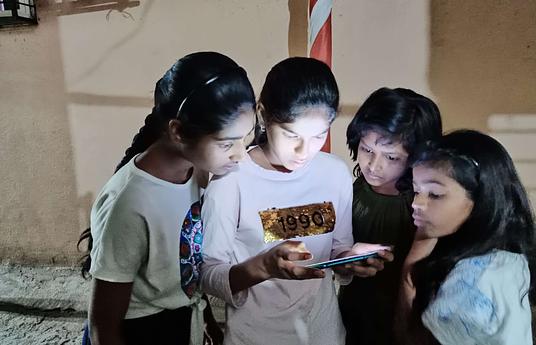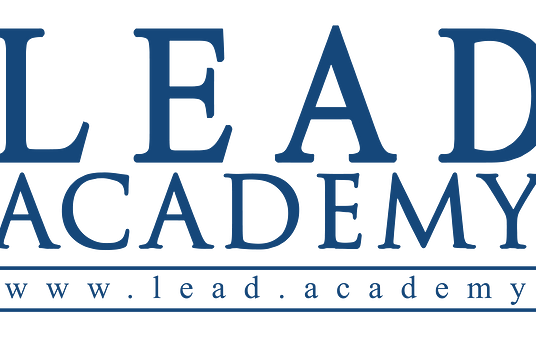“You don’t have to see the whole staircase, just take the first step.”
– Martin Luther King Jr., I Have a Dream speech (1963)
Keeping students engaged throughout the learning process is essential. However, this task has become harder as learners’ attention spans shrink and competing distractions grow. Bite-sized learning offers a different approach that is designed to combat the cognitive overload that often accompanies lengthy study sessions, providing learners with manageable portions of information to enhance retention.
Discover how Code Mitra, EIDU, LEAD Academy and SEL Kernels of Practice, innovations from the HundrED 2024 Global Collection, are applying bite-sized learning principles to support educational practices globally across different settings and subjects.
But…what does bite-sized mean?
Bite-size learning or microlearning, as the name suggests, involves breaking down education content into small, easily digestible units. These concise modules typically range from a few minutes up to fifteen, making them ideal for quick consumption, and can be delivered through videos, interactive quizzes, or short articles.
True bite-sized lessons are not just about time, but simplicity too. They focus on a single learning objective, allowing learners to put all their attention on one aspect and helping them have a sense of accomplishment after each session. When Shaoib Dar, Founder and CEO of the Pi Jam Foundation, set out to teach coding to youth, he kept this in mind. First, they developed a free platform, Code Mitra, that uses drag-and-drop visual coding mechanisms on a phone or tablet. They used this interface to break down complex computer science concepts into manageable chunks - each idea explained through animation and professional voice acting and capped with an opportunity to try it out directly. The exercises are short, but their use of playful, visual media means that students are much more likely to revisit the contents and share their products with their friends.
Code Mitra's free application allows students to learn to code from any device
Code Mitra builds up a full curriculum of foundational ICT skills out of small lessons, which gives them the freedom to be creative in how each concept is presented. Students may be challenged to create a piece of art, solve a problem, iterate on designs, or build something from scratch - all in short bursts, and learning along the way.
Benefits of bite-sized learning
The benefits of this approach are manifold. First, by breaking down complex topics into manageable pieces, it provides learners with a sense of accomplishment after each session, fostering motivation and sustained interest in the subject matter. As shown by Code Mitra’s approach, the simplified lesson contents make them easier to master. This clarity also works well within Constructivist approaches to education, as students are constantly building on their own knowledge to reach a deeper understanding.

The modules in SEL Kernels of Practice are easily adapted to different contexts
Bite sized learning is especially suited for building habits. American based EASEL lab, at Harvard, developed their innovation SEL Kernels of Practice with this in mind. They provide a library of short SEL activities that can be easily slotted into lessons of any kind - art, music, games. These ten-minute chunks build upon themselves and reinforce the 5 domains of SEL. Teachers are trained to use them regularly. This technique, known as spaced repetition, helps the students develop healthy habits for grappling with their emotions and those of their peers. “Our focus has been on how to shift SEL practice from 'some days' to 'every day,' by creating strategies rooted in evidence that are simple, easy, and fun to do, as well as highly adaptable to different learning settings and activities and cultural contexts and needs,” says Stephanie Jones, the project's head. These small chunks of SEL are thoroughly researched and designed to be adapted to new cultural contexts. To date, they are in use across 12 countries and 4 continents.
What do they look like? “Cool Kid” gives students an opportunity to acknowledge each others’ positive attributes. “Dear Abby” provides space for students to think about how to give advice and empathise with others. Various brain games build students executive functioning skills, especially their ability to reflect before acting.
What kinds of subjects are suited to bite-sized learning?
With the right frame of mind, just about anything can be taught through microlessons. Consider some innovations from our Global Collection: Code Mitra teaches computer science, EIDU teaches reading and math, SEL Kernels of practice teaches relational skills, and LEAD Academy has lessons on just about everything! It’s not about the content, but rather how it’s packaged and delivered.
.png)
In Bangladesh, where LEAD Academy operates, certifications and credentials are tremendously important for career advancement. The organisation’s co-founder, Ashfaq Zaman, says that several factors came together that led to their creation of a rigorous micro credentialing system that comes with strong endorsements: “Our approach was born out of the necessity to bridge the gap between industry and academia, fostering a new generation of learners who are not just academically proficient but are also adept problem solvers and critical thinkers.” For LEAD Academy, the bite-sized approach makes these skills more accessible for all learners, not only in terms of affordability but for users with disabilities as well. They are able to offer captioning, transcripts, screen reader support and a diversity of formats that reflect learners' needs. The short format courses also make production of new content more efficient, affording them the space to cater to groups that are often excluded from traditional programmes.
Ashfaq shares the story of one woman in particular who took part in one of their targeted programmes, Women in Entrepreneurship: “Anamika … proceeded to establish her own manufacturing facility, where she currently leads a team of 10-12 workers in the production of high quality goods. Her trajectory exemplifies the tangible impact of microcredential programmes."
It’s not traditional versus micro
Learning about subjects in bite-sized chunks helps keep learners focused and actively involved in their own learning process and can be strategically applied to existing materials. EIDU, an innovation operating in Kenyan schools, uses its bite-sized modules as to digitalise the Tayari curriculum developed in collaboration with the Kenyan Ministry of Education. At the core of their work is a digital platform that provides comprehensive lesson plans for teachers and interfaces with small numbers of tablets in classrooms - often just one or two - where students can reinforce the lessons they receive in whole-class settings. The restriction on the number of devices means that the individual interactions for students need to be short. EIDU takes this imposed time limit and builds something special out of it: Big Data, personalisation, and real-time monitoring of learning on a large scale.
"They can repeat things as much as they need... and the children have never been as motivated to come to class early and study, even during lunch breaks!"
Because students interact with their programme in short, frequent bursts, EIDU is able to target the exercises they give to the student and perform AB testing on what questions, approaches, and models work best for each one. They are able to provide real time access to teachers and educational decision makers about how students are learning and build more effective national curricula based on the data they surface. The exercises serve as regular check-ins and serve as formative assessment without adding any additional burden to the classroom teacher.
What's more, teachers see tangible improvements in their classrooms. A Randomised Control Trial found that EIDU is in the top 10% of impactful educational programmes in improving reading and mathematics competencies. Absenteeism rates fall and administrator support improves. Evans Obisa Chandai, a school coordinator who has been using the programme since 2021, shares how it has improved his ability to give quality teacher support: "I am much better at giving teachers formative feedback confidently, because I can give them much more concrete advice." But crucially, the students are learning. Emily Agoo, a pre-school teacher in Nairobi says that EIDU has been "incredible helpful for students, especially slow learners, because they can repeat things as much as they need... and the children have never been as motivated to come to class early and study, even during lunch breaks!"
4 takeaways for Bite Size
- In the face of shrinking attention spans and growing distractions, bite-size learning is a powerful tool to combat the cognitive overload that learners face.
- By breaking down complex topics into manageable pieces, it provides learners with a sense of accomplishment after each session, fostering motivation and helping students build habits.
- Innovators at Code Mitra, EIDU, LEAD Academy and SEL Kernels of Practice are applying bite-size learning to teach computer science, reading and maths, and social skills globally, but this approach can be applied to any subject and at any age.
- The micro learning approach can also be used as a complement to support traditional learning by reinforcing certain pieces of information when needed.
Want to learn more about impactful education innovations? Check out the 2024 Global Collection report.
Working on your own innovation? Submit your innovation to be considered for the next collection.
Header photo credit: EIDU



.jpg)
